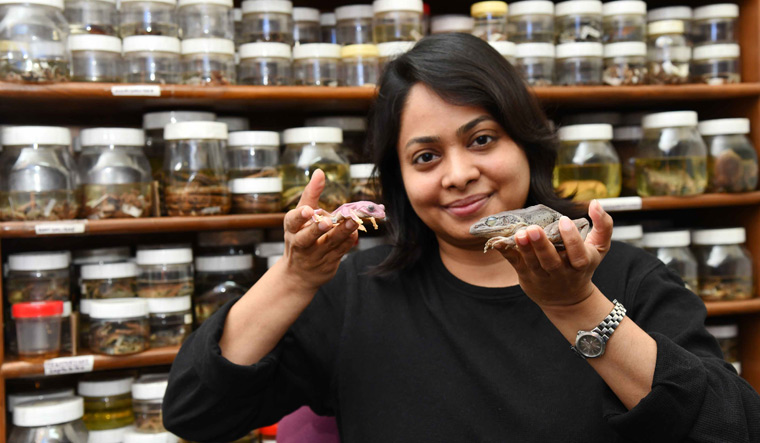Frogs are just frogs, right? Surely not, says Sonali Garg. Want to hear a story? Long before the India plate collided into Eurasia and raised Mount Everest and the Himalayas, a family of narrow-mouthed frogs lived in what is now the Western Ghats. Today, their nearest relatives live 2,000km away, in south east Asia.
So what?
Well, for one, how did the frogs get there? Popular theories say that the dispersion of species from India happened after the landmasses finally joined, some 30 million to 40 million years ago. But this frog is endemic to the southern Western Ghats. So, it did not travel north, but eastwards. How? There must have been a primordial land bridge that connected India to southeast Asia. And to think that Garg and her research guide, Dr S.D. Biju, found the clue to this bridge in a roadside puddle.
Also read
- Midnight's Daughters: Women who fought for the idea of India and her freedom
- Tawaifs: unsung warriors of India's independence
- Anuja Chauhan on the dawn of Indian women
- Chanel’s global CEO Leena Nair wears humility and empathy on her sleeve
- Falguni Nayar's makeover magic
- 44-year-old woman gives board exams, inspires child brides to join her
The research team found a mysterious tadpole in a puddle. It took the team three years to collect the first adult. Further research resulted in the identification of a new genus, Mysticellus; the sole member of the new species is M. franki, or the mysterious narrow-mouthed frog.
So, frogs are not just frogs, and the 34-year-old Garg is the first Indian woman to describe 50 new species of them. Her life was mostly lived away from frogs, in Uttar Pradesh, Rajasthan and Delhi. Hailing from the small textile town of Pilkhuwa in Uttar Pradesh, she studied in Mayo College Girls’School, Ajmer, and then joined Hansraj College in Delhi for a bachelor’s in zoology.
The turning point came when she joined Delhi University’s Department of Environmental Studies for a master’s in environmental studies. She met Biju there, and frogs, and was convinced that this was to be her life. She turned down an MPhil seat at Oxford University and joined the doctoral programme at the Systematics Lab in her old department.
“I had explored many subjects in my undergraduate and postgraduate years,” Garg said. “But I was still looking for a purpose, a calling. And, I found them in frogs. Growing up in northern India, to me, frogs were brown and generally unattractive animals that crawled into homes when it rained. And then I saw the variety in the Western Ghats and in the northeast, and was amazed.”
She described her first new species in 2014, from the genus Micrixalus, popularly called dancing frogs. And the fiftieth one came in January, from Nicobar—Microhyla nakkavaram. The frogs in between came from Sri Lanka and Indonesia, too.
It has not been an easy journey for Garg. She is the first PhD from a family of businessmen. “Being the lone woman in the field or being the woman working alongside men demands acceptance,” she said. “Acceptance from family, colleagues and the general public. And, frogs bring a different set of challenges. They are out mostly at night. They are in abundance during the monsoons. And, where there are frogs there are snakes. As a woman, I have had to be more cautious about people more than animals! Thankfully, I have met lots of supportive people along the way.” She credits her parents, Raj Bala and Satendra Garg, for backing her choices. “My strength, in a way, comes from my mother,” she said. “Even my grandparents accepted my rather unorthodox career choice with open arms.”
Her stint as a postdoctoral researcher at the Systematics Lab will end in March. Then it is on to Harvard University for two years as she has been awarded the prestigious Edward O. Wilson biodiversity postdoctoral fellowship. But, she is not leaving before June, when the first rains will bring the frogs out in strength.


